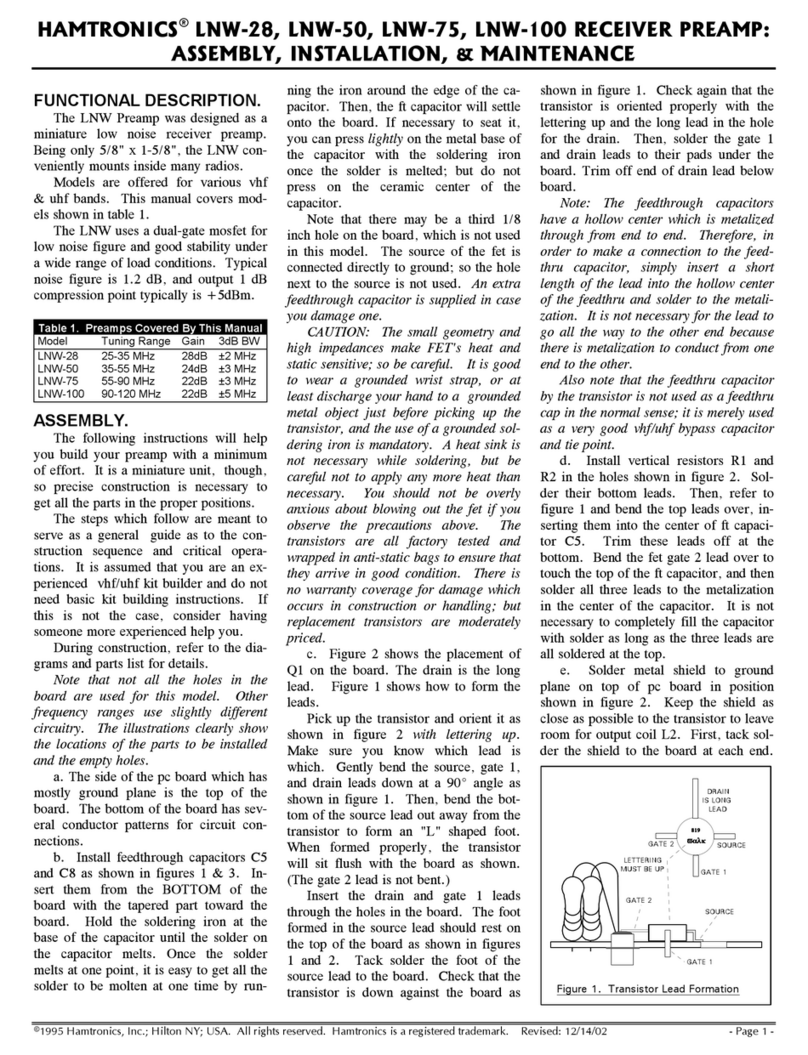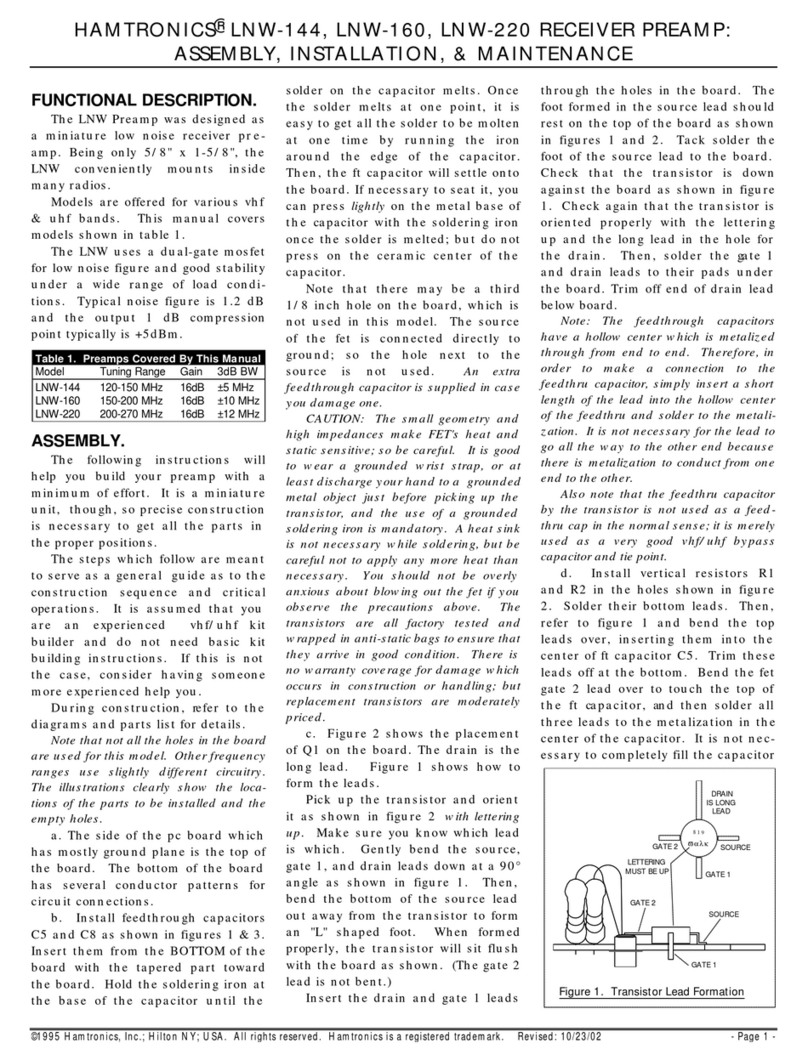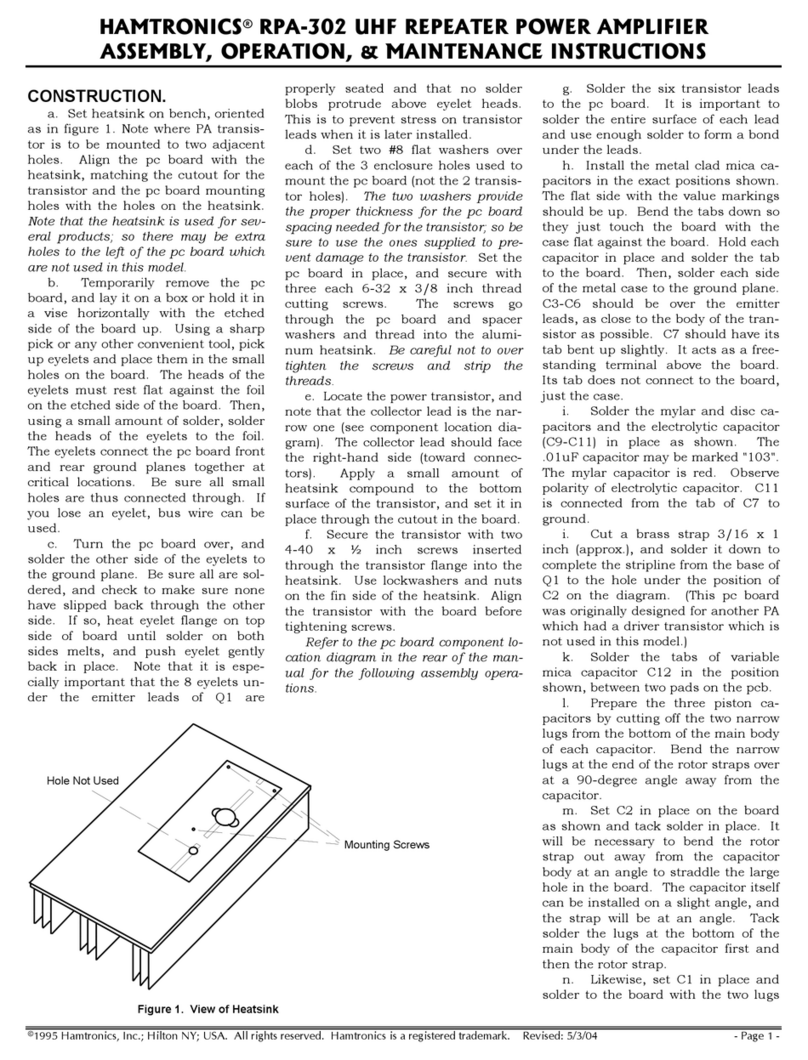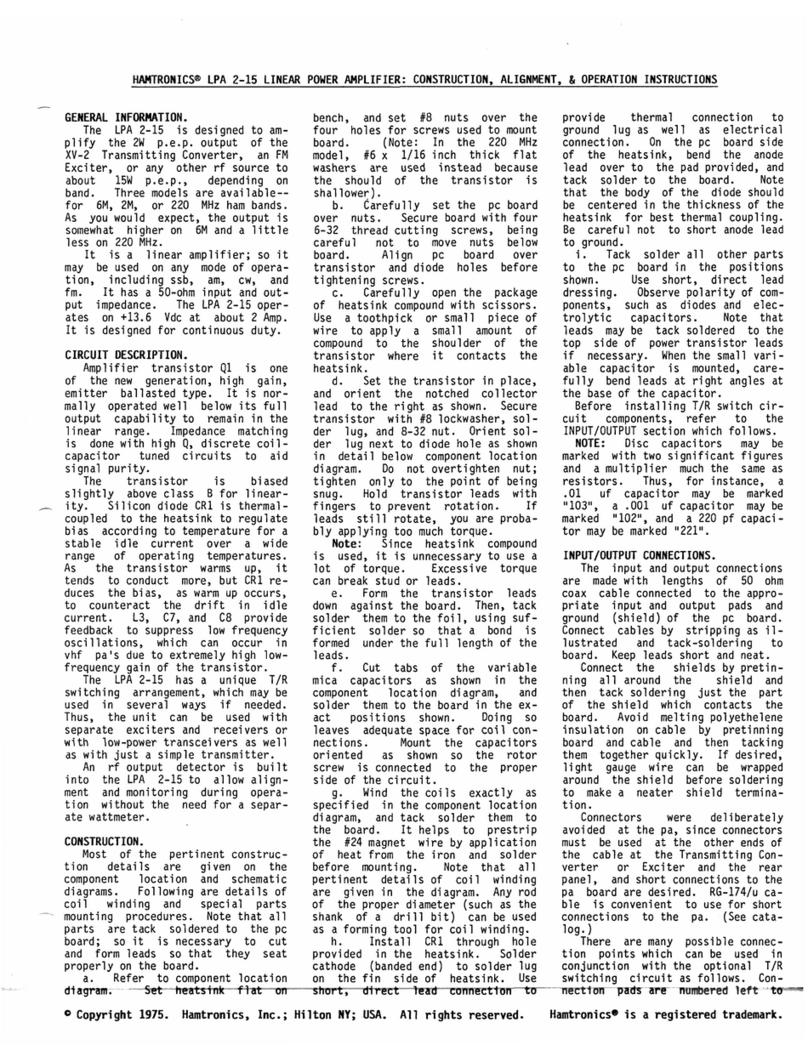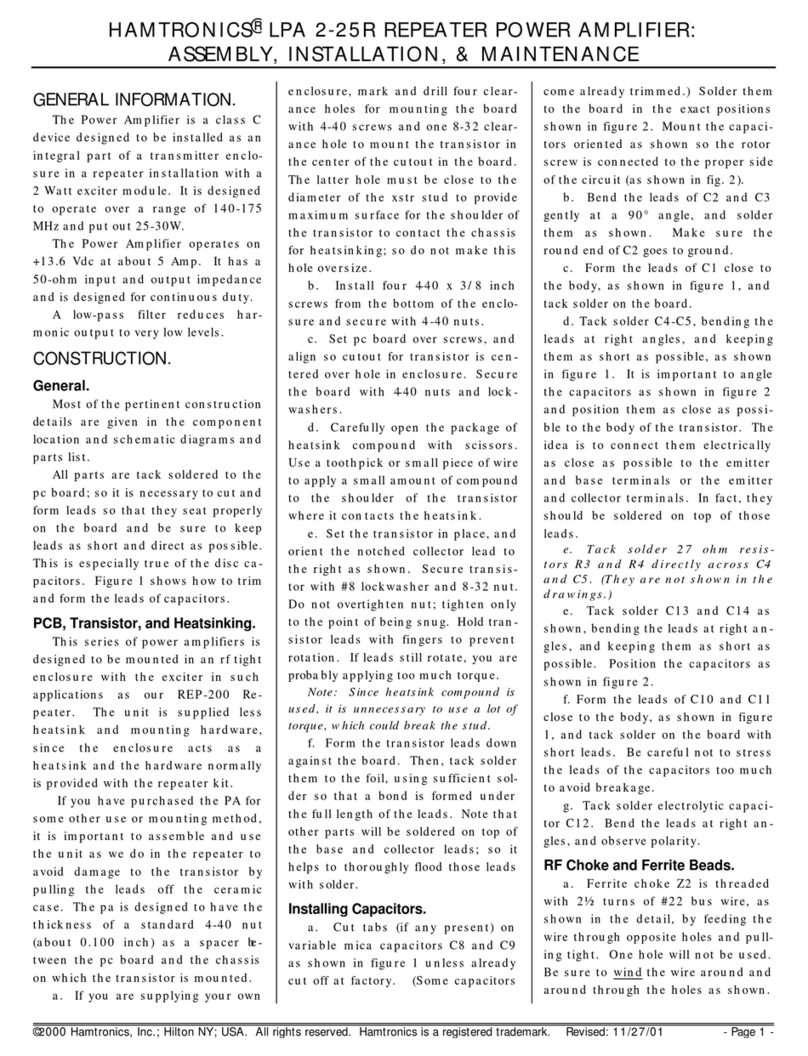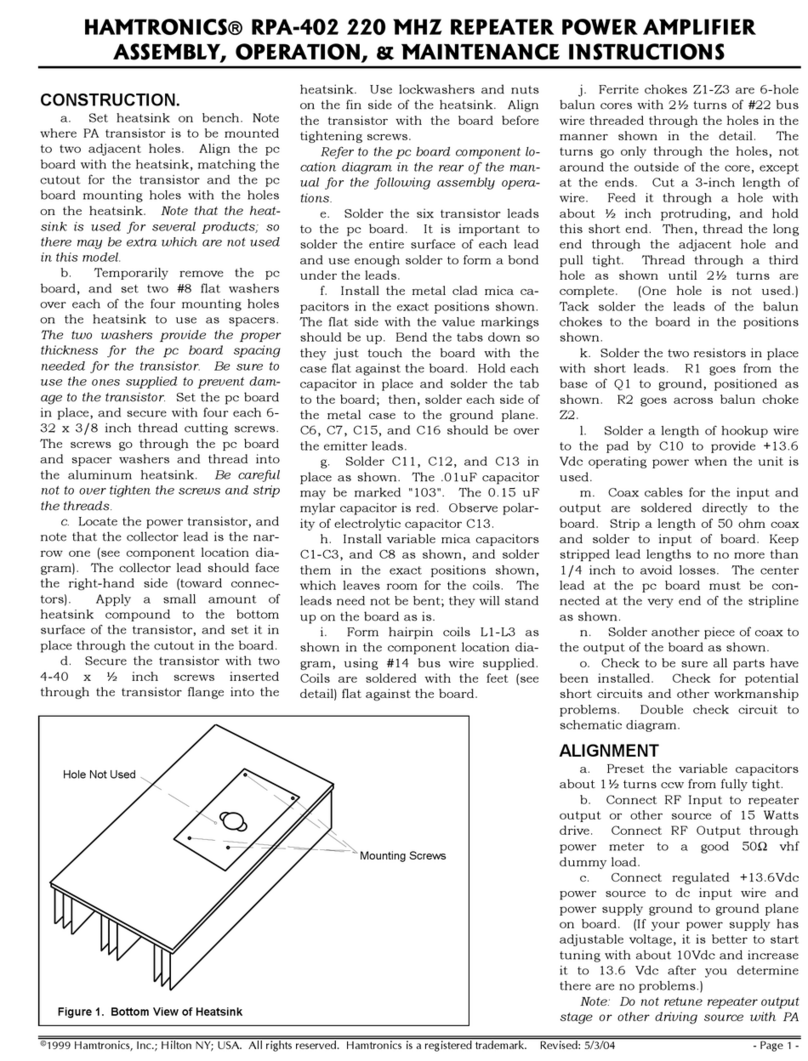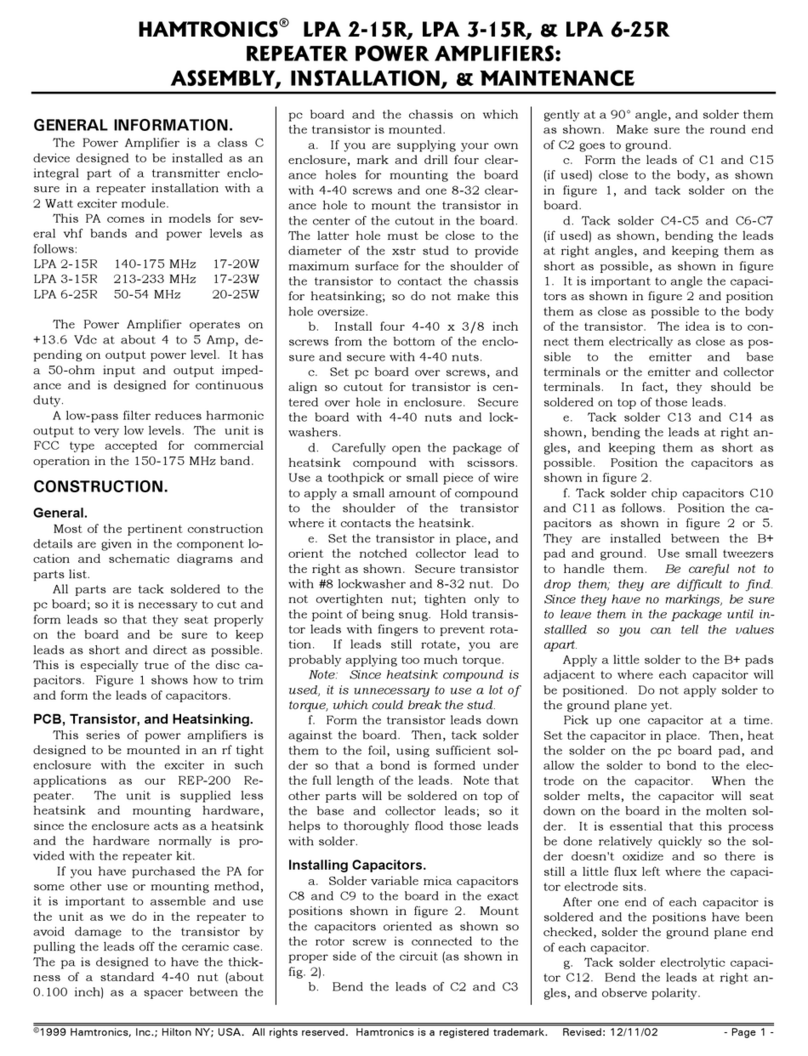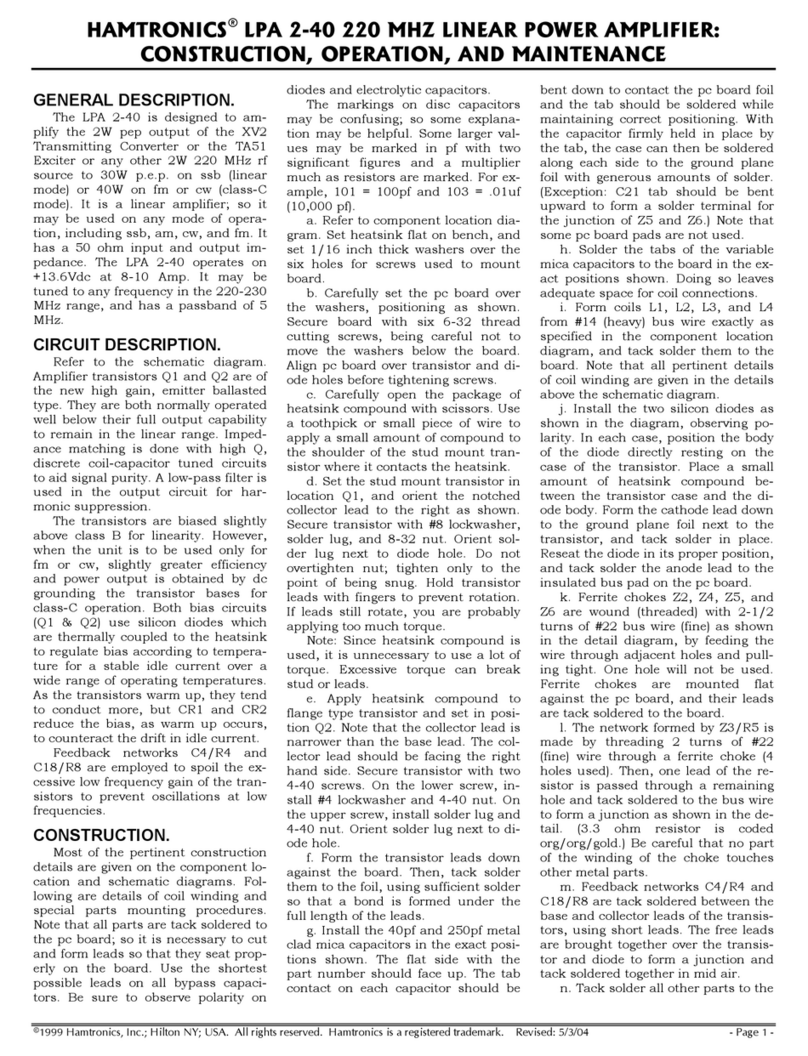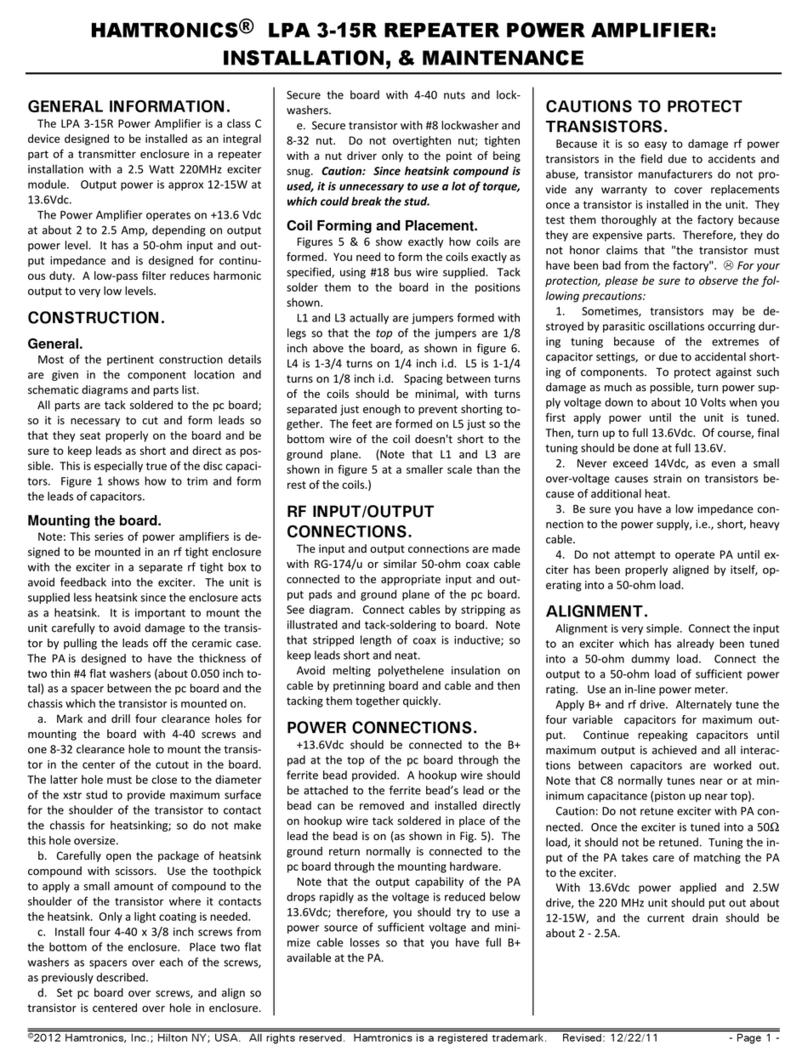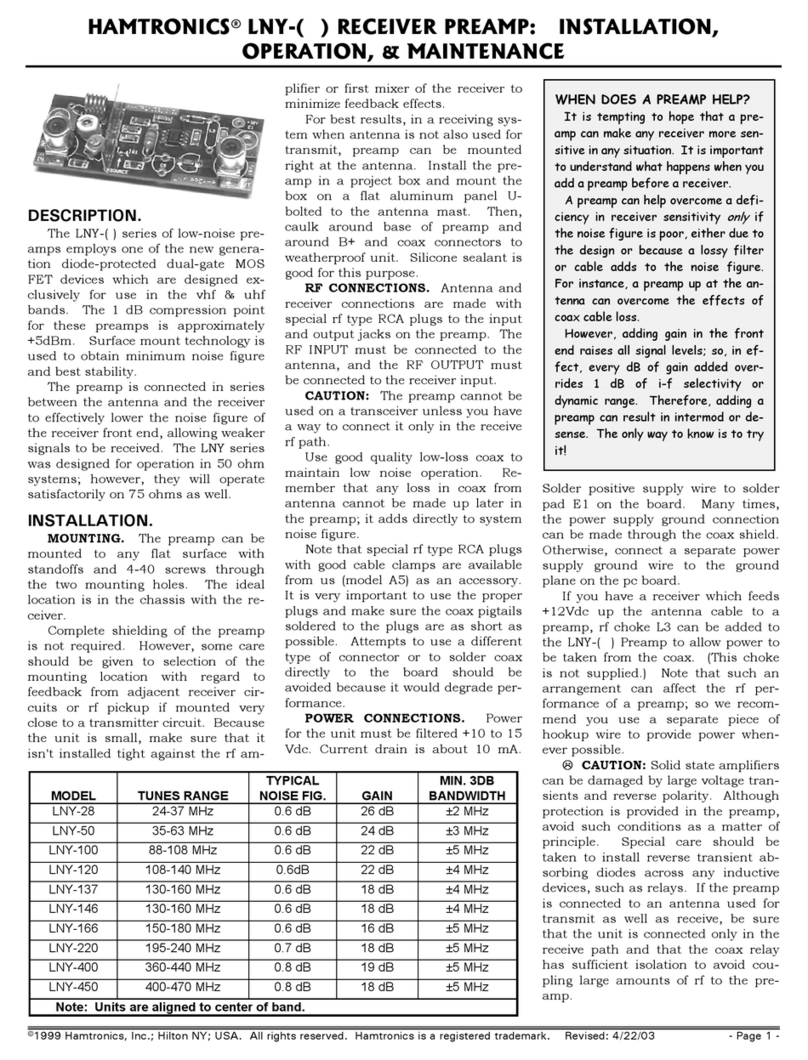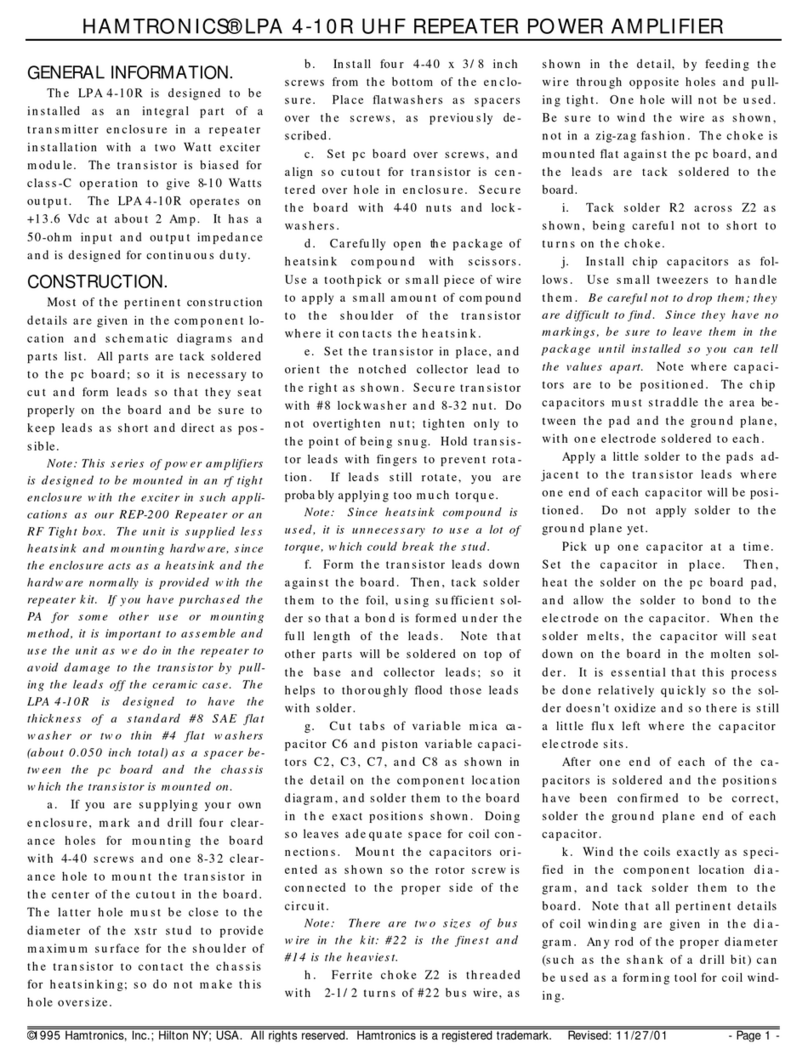
©2000 Hamtronics, Inc.; Hilton NY; USA. All rights reserved. Hamtronics is a registered trademark. Revised
GENERAL INFORMATION.
The Power Amplifier is a class C
device designed to be installed as an
integral part of a transmitter enclo-
sure in a repeater installation with a
2 Watt exciter module. It is designed
to operate over a range of 40- 75
MHz and put out 25-30W.
The Power Amplifier operates on
+ 3.6 Vdc at about 5 Amp. It has a
50-ohm input and output impedance
and is designed for continuous duty.
A low-pass filter reduces harmonic
output to very low levels.
CONSTRUCTION.
General.
Most of the pertinent construction
details are given in the component lo-
cation and schematic diagrams and
parts list.
All parts are tack soldered to the
pc board; so it is necessary to cut and
form leads so that they seat properly
on the board and be sure to keep
leads as short and direct as possible.
This is especially true of the disc ca-
pacitors. Figure shows how to trim
and form the leads of capacitors.
PCB, Transistor, and Heatsinking.
This series of power amplifiers is
designed to be mounted in an rf tight
enclosure with the exciter in such
applications as our REP-200 Re-
peater. The unit is supplied less
heatsink and mounting hardware,
since the enclosure acts as a heatsink
and the hardware normally is pro-
vided with the repeater kit.
If you have purchased the PA for
some other use or mounting method,
it is important to assemble and use
the unit as we do in the repeater to
avoid damage to the transistor by
pulling the leads off the ceramic case.
The pa is designed to have the thick-
ness of a standard 4-40 nut (about
0. 00 inch) as a spacer between the
pc board and the chassis on which
the transistor is mounted.
a. If you are supplying your own
enclosure, mark and drill four clear-
ance holes for mounting the board
with 4-40 screws and one 8-32 clear-
ance hole to mount the transistor in
the center of the cutout in the board.
The latter hole must be close to the
diameter of the xstr stud to provide
maximum surface for the shoulder of
the transistor to contact the chassis
for heatsinking; so do not make this
hole oversize.
b. Install four 4-40 x 3/8 inch
screws from the bottom of the enclo-
sure and secure with 4-40 nuts.
c. Set pc board over screws, and
align so cutout for transistor is cen-
tered over hole in enclosure. Secure
the board with 4-40 nuts and lock-
washers.
d. Carefully open the package of
heatsink compound with scissors.
Use a toothpick or small piece of wire
to apply a small amount of compound
to the shoulder of the transistor
where it contacts the heatsink.
e. Set the transistor in place, and
orient the notched collector lead to
the right as shown. Secure transistor
with #8 lockwasher and 8-32 nut. Do
not overtighten nut; tighten only to
the point of being snug. Hold transis-
tor leads with fingers to prevent rota-
tion. If leads still rotate, you are
probably applying too much torque.
Note: Since heatsink compound is
used, it is unnecessary to use a lot of
torque, which could break the stud.
f. Form the transistor leads down
against the board. Then, tack solder
them to the foil, using sufficient sol-
der so that a bond is formed under
the full length of the leads. Note that
other parts will be soldered on top of
the base and collector leads; so it
helps to thoroughly flood those leads
with solder.
Installing Capacitors.
a. Solder variable mica capacitors
C8 and to the board in the exact posi-
tions shown in figure 2. Mount the
capacitors oriented as shown so the
rotor screw is connected to the proper
side of the circuit (as shown in fig. 2).
b. Bend the leads of C2 and C3
gently at a 90° angle, and solder them
as shown. Make sure the round end
of C2 goes to ground.
c. Form the leads of C close to
the body, as shown in figure , and
tack solder on the board.
d. Tack solder C4-C5, bending the
leads at right angles, and keeping
them as short as possible, as shown
in figure . It is important to angle
the capacitors as shown in figure 2
and position them as close as possi-
ble to the body of the transistor. The
idea is to connect them electrically as
close as possible to the emitter and
base terminals or the emitter and col-
lector terminals. In fact, they should
be soldered on top of those leads.
e.
e.e.
e.
Tack solder 10 ohm resi
Tack solder 10 ohm resiTack solder 10 ohm resi
Tack solder 10 ohm resis
ss
stor
tor tor
tor
R directly across C5 with shor
R directly across C5 with shorR directly across C5 with shor
R directly across C5 with short
t t
t
leads. (It is not shown in the dra
leads. (It is not shown in the draleads. (It is not shown in the dra
leads. (It is not shown in the draw-
w-w-
w-
ings.)
ings.)ings.)
ings.)
e. Tack solder C 3 and C 4 as
shown, bending the leads at right an-
gles, and keeping them as short as
possible. Position the capacitors as
shown in figure 2.
f. Form the leads of C 0 and C
close to the body, as shown in figure
, and tack solder on the board with
short leads. Be careful not to stress
the leads of the capacitors too much
to avoid breakage.
g. Tack solder electrolytic capaci-
tor C 2. Bend the leads at right an-
gles, and observe polarity.
RF Choke and Ferrite Beads.
a. Ferrite choke Z2 is threaded
with 2½ turns of #22 bus wire, as
shown in the detail, by feeding the
wire through opposite holes and pull-
ing tight. One hole will not be used.
Be sure to wind the wire around and
around through the holes as shown.
Do not thread the wire through in a
zig-zag fashion. The choke is
mounted flat against the pc board,
and the leads are tack soldered to the
board.
b. Install resistor R2 across Z2 as
shown.
c. Cut the bus wire off the ferrite
bead close to one end of the bead and
discard the leads.
d. The following procedure in-
stalls a power lead of the proper
length for our repeater. If you have a
different installation, you can do
something similar. Cut a 3 inch
length of red hookup wire. Strip one
end ¼ inch and the other end 5/8
inch. Tack solder the ¼inch end to
the pc board power trace as shown.
Better yet, wrap it around the lead of
C 2 and solder so that it is mechani-
cally secure. Slide the ferrite bead
over the long end, and bend the wire
at a slight angle to hold the bead in
place until you solder the lead to the
feedthrough capacitor in the repeater.
e. Twist together and tack solder
one lead each of rf choke L2 and re-
sistor R . Trim the other lead of each
part to about ¼ inch and form down
to reach the board. Then, tack solder
these leads to the board as shown,
with the lead of L2 to the pad area for
HAMTRONICS
LPA 2-25R REPEATER POWER AMPLIFIER:
ASSEMBLY, INSTALLATION, & MAINTENANCE
